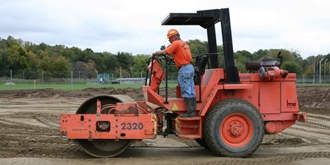Professional Septic Ohio - Trusted Septic System Specialists in Ohio
Professional Septic Ohio - Trusted Septic System Specialists in Ohio
Blog Article
Comprehensive Excavation Methods: Understanding the Principles for Success
The cautious planning, accurate execution, and thorough attention to information called for in excavation tasks demand an extensive method that encompasses various basic elements. The real proficiency lies not merely in recognizing these fundamentals but in seamlessly incorporating them to browse the complexities of excavation jobs with finesse.
Understanding Excavation Project Preparation

Effective excavation tasks are improved the foundation of thorough and extensive planning. The preliminary stage of any excavation task is the drawing board, where vital decisions are made that can considerably impact the end result of the project. Throughout this phase, it is important to collect all relevant information about the website, consisting of topographical surveys, dirt structure, and any kind of possible risks that might exist. Understanding the job spending plan, timeline, and extent constraints is critical for creating a comprehensive excavation plan that makes certain the task's success.
One key aspect of excavation task planning is the advancement of an in-depth timeline that details the series of target dates, landmarks, and activities. This timeline acts as a roadmap for the job group, enabling them to track progress and make required adjustments to make certain the project remains on timetable. In addition, a distinct spending plan that accounts for all expenditures, consisting of devices service, labor prices, and materials, is crucial for preventing expense overruns and delays. By meticulously taking into consideration all these aspects throughout the drawing board, excavation projects can be performed efficiently and effectively, leading to effective end results.
Soil Evaluation and Site Analysis
Performing extensive soil analysis and website evaluation is a critical action in the preparation stage of any type of excavation job. Dirt analysis includes identifying the composition, framework, and properties of the dirt at the excavation site. This information is vital for comprehending the soil's bearing capability, moisture content, and possibility for disintegration, which are essential factors in determining the excavation methods and equipment required for the project.
Site analysis surpasses dirt evaluation and encompasses a wider assessment of the general site conditions. This evaluation includes recognizing any type of possible threats, such as underground utilities, environmental worries, or unstable surface, that might influence the excavation procedure. By thoroughly examining the website, job supervisors can create effective excavation strategies that focus on safety, efficiency, and environmental management.
Using innovative innovations like ground-penetrating radar, soil sampling, and drone studies can boost the precision and performance of dirt evaluation and website analysis. Spending time and resources in these initial steps can inevitably conserve time and avoid pricey delays or issues during the excavation procedure.
Devices Selection and Utilization
Reliable excavation tasks depend greatly on critical equipment option and usage to ensure optimal efficiency and efficiency. Selecting the ideal tools for the job is vital in taking full advantage of efficiency and minimizing downtime. Variables such as the kind of dirt, depth of excavation, and task extent play a considerable function in figuring out one of the most suitable devices for the job at hand.

In addition to choosing the appropriate tools, appropriate application is crucial to job success. Operators needs to be educated to take care of the tools securely and successfully - excavating ohio. Routine upkeep checks and timely repair services assist stop breakdowns and ensure consistent performance throughout the task
Precaution and Regulations Compliance
In the world of excavation jobs, prioritizing safety steps and compliance with laws is extremely important to making their explanation sure a legally audio and safe functional atmosphere. Safety measures incorporate a series of techniques, consisting of carrying out comprehensive website evaluations, executing appropriate signage and barriers, and supplying appropriate safety training for all personnel included in the excavation procedure. Adherence to laws, such as OSHA requirements in the USA, guarantees that the excavation job fulfills the needed standards to shield workers, spectators, and the surrounding atmosphere.

Tracking Progress and Adjusting Strategies
Exactly how can project supervisors properly track the improvement of excavation jobs and adjust their methods as necessary to enhance results? Monitoring progress is essential for ensuring that excavation tasks stay on track and meet due dates. Project supervisors can use various devices and techniques to track progression, such as daily report card, routine website examinations, and progressed monitoring technologies like drones and general practitioners tracking systems. By continually keeping an eye on the project's innovation, managers can recognize any type of potential delays or issues early and take proactive steps to resolve them.

Verdict
Finally, understanding the basics of extensive excavation strategies is crucial for the success of any kind of job. By understanding task planning, analyzing dirt and website conditions, selecting proper equipment, complying with security guidelines, and keeping track of progress, task managers can make sure a smooth and reliable excavation process. Applying these techniques will certainly result in effective outcomes and decrease potential dangers or setbacks during the excavation project.
The initial stage of any type of excavation task is the planning phase, where crucial decisions are made that can significantly impact the result of the task. Understanding the job extent, timeline, and budget plan restrictions is crucial for producing a thorough excavation plan that guarantees the project's success.
Exactly how can predict supervisors effectively track the improvement of excavation tasks and adapt their approaches accordingly to optimize outcomes? By carefully checking progression and being prepared to adapt techniques, job managers can improve the general success of excavation tasks.
By recognizing task preparation, analyzing dirt and site conditions, choosing suitable equipment, visit the website complying with safety policies, and keeping an eye on progression, task supervisors can make sure a smooth and effective excavation procedure.
Report this page